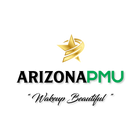Wet Healing vs Dry Healing
This topic is controversial, and everybody has different opinions in the permanent Cosmetics World. Let's first define what they are and what are the differences.
Dry healing is an aftercare approach commonly used by permanent makeup artists to aid in the healing process of cosmetic tattooing procedures. It involves minimal to no application of ointments, creams, or any external substances on the treated area, allowing the skin to heal naturally.
Here's a breakdown of the key aspects of dry healing as aftercare for permanent makeup:
-
Initial care: After the permanent makeup procedure, the artist will typically clean the treated area and apply a thin layer of protective ointment or barrier film. This step helps create a temporary barrier against bacteria and external contaminants.
-
No water exposure: It is crucial to avoid any water exposure, including showers, swimming, or steam, during the initial healing period. Water can disrupt the formation of scabs and potentially cause pigment loss.
-
No touching or picking: It's important to refrain from touching, scratching, or picking at the treated area, as this can introduce bacteria and interfere with the healing process. Let the body's natural healing mechanisms take effect.
-
Avoid makeup and skincare products: For a specified period, typically about one to two weeks, it's advised to avoid applying makeup, skincare products, or any other topical treatments directly on the treated area. These products can contain ingredients that may irritate the healing skin or affect the pigment retention.
-
Natural healing process: During dry healing, the skin forms a protective layer in the form of scabs or dry flakes, which gradually slough off naturally. The skin underneath undergoes a regeneration process, and the pigment becomes embedded in the deeper layers, resulting in long-lasting results.
-
Moisturizing sparingly: Depending on the artist's instructions, once the initial healing period is over, a minimal amount of gentle, fragrance-free moisturizer may be applied to the treated area. However, this should be done sparingly and only if explicitly recommended by the artist.
-
Sun protection: It is crucial to protect the healed permanent makeup from sun exposure. Direct sunlight can cause fading and damage to the pigment. Apply a broad-spectrum sunscreen with a high SPF and, if possible, avoid prolonged sun exposure or use protective clothing.
Wet healing is an alternative aftercare regimen for permanent makeup procedures that involves keeping the treated area moist and applying specific products to aid in the healing process. Unlike dry healing, which emphasizes minimal intervention, wet healing focuses on providing a controlled and moist environment to promote optimal healing. Here's an explanation of wet healing as an aftercare regimen for permanent makeup:
-
Immediate care: After the permanent makeup procedure, the artist will typically clean the treated area and apply a thin layer of specialized aftercare product. These products are specifically formulated to create a moist environment that promotes healing while protecting the area from bacteria and external contaminants.
-
Moisture retention: Wet healing involves the application of aftercare products several times a day, typically every few hours, to keep the treated area constantly moist. This may include using ointments, healing balms, or serums recommended by the artist.
-
Gentle cleansing: During wet healing, it's important to cleanse the treated area regularly with a gentle, non-irritating cleanser recommended by the artist. This helps remove any excess product buildup, oils, or debris while maintaining the moist environment.
-
Avoid water exposure: While wet healing encourages moisture retention, it's crucial to avoid direct water exposure, including showers, swimming, or steam, as it can disrupt the healing process and potentially cause pigment loss. Protect the treated area from excessive moisture.
-
No touching or picking: Just like with dry healing, it's essential to refrain from touching, scratching, or picking at the treated area to prevent introducing bacteria and interfering with the healing process. Let the body's natural healing mechanisms take effect.
-
No makeup or skincare products: During the initial healing period, it's advisable to avoid applying makeup, skincare products, or any topical treatments directly on the treated area. These products can potentially interfere with the healing process or cause irritation.
-
Sun protection: Protecting the healed permanent makeup from sun exposure is crucial during both dry and wet healing. Apply a broad-spectrum sunscreen with a high SPF and, if possible, avoid prolonged sun exposure or use protective clothing.


Leave a comment